Vadim Sheinin
LLM-as-a-Judge for Reference-less Automatic Code Validation and Refinement for Natural Language to Bash in IT Automation
Jun 12, 2025Abstract:In an effort to automatically evaluate and select the best model and improve code quality for automatic incident remediation in IT Automation, it is crucial to verify if the generated code for remediation action is syntactically and semantically correct and whether it can be executed correctly as intended. There are three approaches: 1) conventional methods use surface form similarity metrics (token match, exact match, etc.) which have numerous limitations, 2) execution-based evaluation focuses more on code functionality based on pass/fail judgments for given test-cases, and 3) LLM-as-a-Judge employs LLMs for automated evaluation to judge if it is a correct answer for a given problem based on pre-defined metrics. In this work, we focused on enhancing LLM-as-a-Judge using bidirectional functionality matching and logic representation for reference-less automatic validation and refinement for Bash code generation to select the best model for automatic incident remediation in IT Automation. We used execution-based evaluation as ground-truth to evaluate our LLM-as-a-Judge metrics. Results show high accuracy and agreement with execution-based evaluation (and up to 8% over baseline). Finally, we built Reflection code agents to utilize judgments and feedback from our evaluation metrics which achieved significant improvement (up to 24% increase in accuracy) for automatic code refinement.
Tackling Execution-Based Evaluation for NL2Bash
May 10, 2024Abstract:Given recent advancement of Large Language Models (LLMs), the task of translating from natural language prompts to different programming languages (code generation) attracts immense attention for wide application in different domains. Specially code generation for Bash (NL2Bash) is widely used to generate Bash scripts for automating different tasks, such as performance monitoring, compilation, system administration, system diagnostics, etc. Besides code generation, validating synthetic code is critical before using them for any application. Different methods for code validation are proposed, both direct (execution evaluation) and indirect validations (i.e. exact/partial match, BLEU score). Among these, Execution-based Evaluation (EE) can validate the predicted code by comparing the execution output of model prediction and expected output in system. However, designing and implementing such an execution-based evaluation system for NL2Bash is not a trivial task. In this paper, we present a machinery for execution-based evaluation for NL2Bash. We create a set of 50 prompts to evaluate some popular LLMs for NL2Bash. We also analyze several advantages and challenges of EE such as syntactically different yet semantically equivalent Bash scripts generated by different LLMs, or syntactically correct but semantically incorrect Bash scripts, and how we capture and process them correctly.
Domain Adaptation of a State of the Art Text-to-SQL Model: Lessons Learned and Challenges Found
Dec 09, 2023



Abstract:There are many recent advanced developments for the Text-to-SQL task, where the Picard model is one of the the top performing models as measured by the Spider dataset competition. However, bringing Text-to-SQL systems to realistic use-cases through domain adaptation remains a tough challenge. We analyze how well the base T5 Language Model and Picard perform on query structures different from the Spider dataset, we fine-tuned the base model on the Spider data and on independent databases (DB). To avoid accessing the DB content online during inference, we also present an alternative way to disambiguate the values in an input question using a rule-based approach that relies on an intermediate representation of the semantic concepts of an input question. In our results we show in what cases T5 and Picard can deliver good performance, we share the lessons learned, and discuss current domain adaptation challenges.
Recognizing and Splitting Conditional Sentences for Automation of Business Processes Management
Apr 01, 2021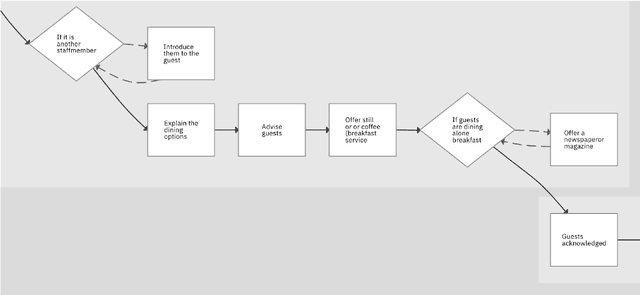



Abstract:Business Process Management (BPM) is the discipline which is responsible for management of discovering, analyzing, redesigning, monitoring, and controlling business processes. One of the most crucial tasks of BPM is discovering and modelling business processes from text documents. In this paper, we present our system that resolves an end-to-end problem consisting of 1) recognizing conditional sentences from technical documents, 2) finding boundaries to extract conditional and resultant clauses from each conditional sentence, and 3) categorizing resultant clause as Action or Consequence which later helps to generate new steps in our business process model automatically. We created a new dataset and three models solve this problem. Our best model achieved very promising results of 83.82, 87.84, and 85.75 for Precision, Recall, and F1, respectively, for extracting Condition, Action, and Consequence clauses using Exact Match metric.
SQL-to-Text Generation with Graph-to-Sequence Model
Sep 14, 2018
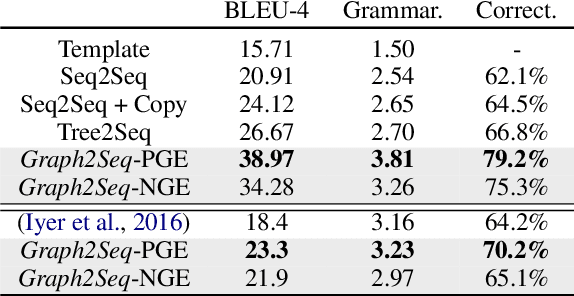
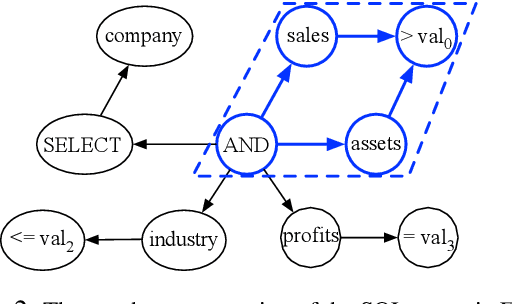
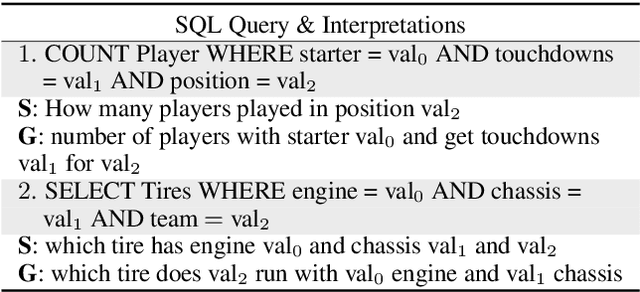
Abstract:Previous work approaches the SQL-to-text generation task using vanilla Seq2Seq models, which may not fully capture the inherent graph-structured information in SQL query. In this paper, we first introduce a strategy to represent the SQL query as a directed graph and then employ a graph-to-sequence model to encode the global structure information into node embeddings. This model can effectively learn the correlation between the SQL query pattern and its interpretation. Experimental results on the WikiSQL dataset and Stackoverflow dataset show that our model significantly outperforms the Seq2Seq and Tree2Seq baselines, achieving the state-of-the-art performance.
Exploiting Rich Syntactic Information for Semantic Parsing with Graph-to-Sequence Model
Aug 23, 2018
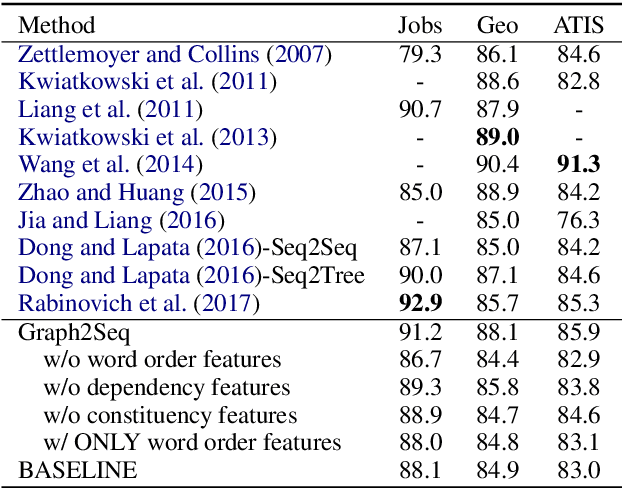
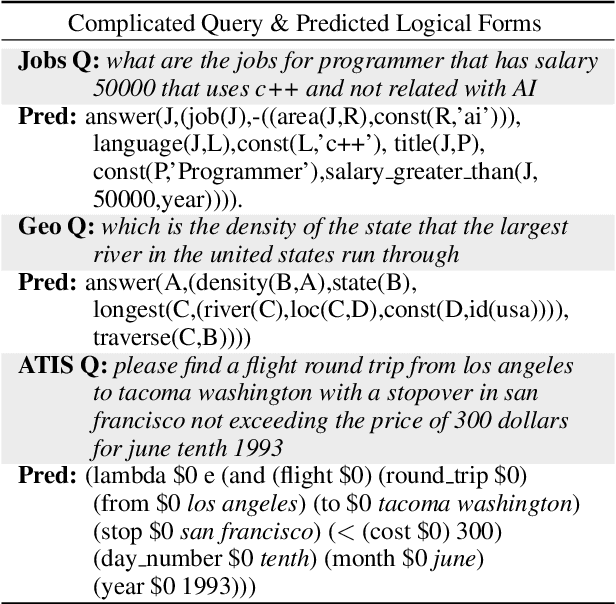
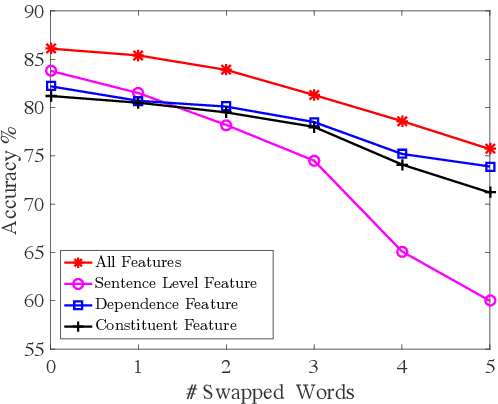
Abstract:Existing neural semantic parsers mainly utilize a sequence encoder, i.e., a sequential LSTM, to extract word order features while neglecting other valuable syntactic information such as dependency graph or constituent trees. In this paper, we first propose to use the \textit{syntactic graph} to represent three types of syntactic information, i.e., word order, dependency and constituency features. We further employ a graph-to-sequence model to encode the syntactic graph and decode a logical form. Experimental results on benchmark datasets show that our model is comparable to the state-of-the-art on Jobs640, ATIS and Geo880. Experimental results on adversarial examples demonstrate the robustness of the model is also improved by encoding more syntactic information.
Graph2Seq: Graph to Sequence Learning with Attention-based Neural Networks
May 25, 2018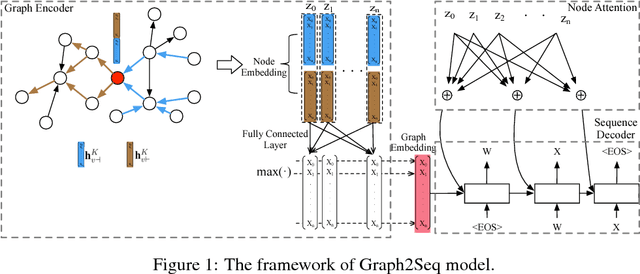


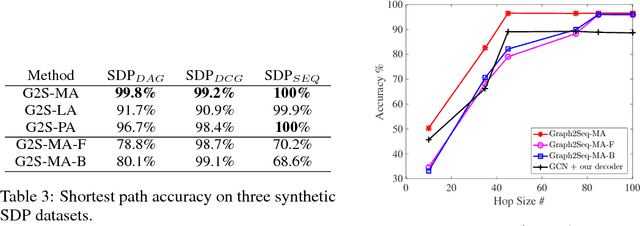
Abstract:The celebrated \emph{Sequence to Sequence learning (Seq2Seq)} technique and its numerous variants achieve excellent performance on many tasks. However, many machine learning tasks have inputs naturally represented as graphs; existing Seq2Seq models face a significant challenge in achieving accurate conversion from graph form to the appropriate sequence. To address this challenge, we introduce a general end-to-end graph-to-sequence neural encoder-decoder architecture that maps an input graph to a sequence of vectors and uses an attention-based LSTM method to decode the target sequence from these vectors. Our method first generates the node and graph embeddings using an improved graph-based neural network with a novel aggregation strategy to incorporate edge direction information in the node embeddings. We further introduce an attention mechanism that aligns node embeddings and the decoding sequence to better cope with large graphs. Experimental results on bAbI, Shortest Path, and Natural Language Generation tasks demonstrate that our model achieves state-of-the-art performance and significantly outperforms baseline systems; using the proposed aggregation strategy, the model can converge rapidly to the optimal performance.
 Add to Chrome
Add to Chrome Add to Firefox
Add to Firefox Add to Edge
Add to Edge